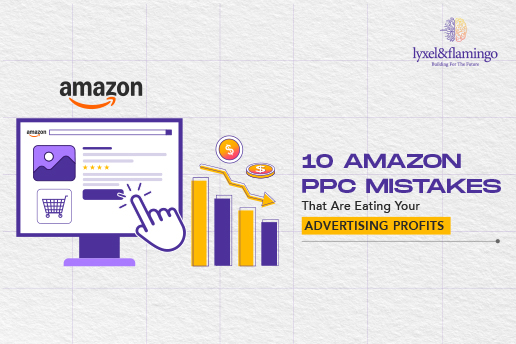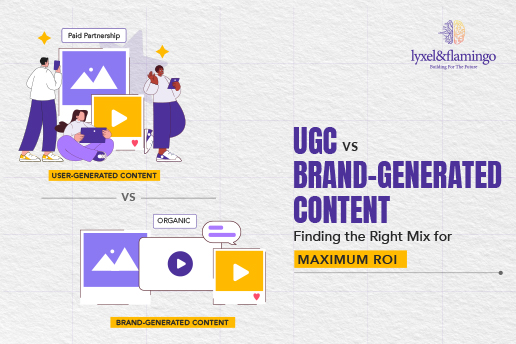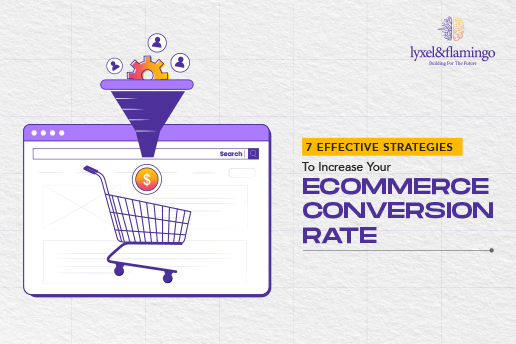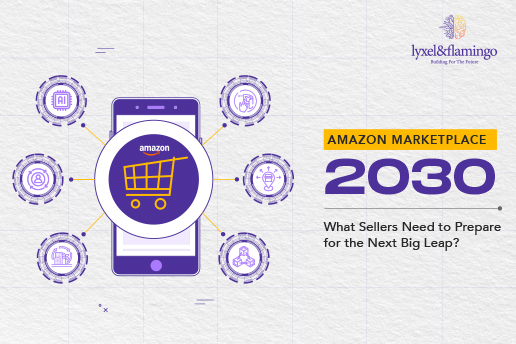Amazon had close to 2.9 billion visits in December 2022. The ease & convenience that the e-Commerce platform provides has resulted in a massive surge in the number of users. With more and more people taking to online shopping, sellers have no option but to leverage the medium to maximize their revenues. Getting the Amazon PPC (pay-per-click) strategy right to win big on this platform is essential.
Visitors on Amazon are most likely to make a purchase because the intent is quite strong. But here’s a fun fact. Nearly 45% of these people do not bother to go beyond the first page. Half the visitors do not even see your product if it fails to rank on the first page. So succeeding on Amazon calls for a constant and rigorous evaluation of the PPC strategy.
There can be a number of mistakes that can turn your online advertising campaigns into duds. The most common ones are discussed here.
#1: Lack of a Clear Strategy
Without a clear strategy for Amazon PPC management, you lose the game even before you begin. When you set clear goals & objectives for the advertising campaign, you can easily track and optimize it according to the demands of the situation. Some of the common goals & objectives that you can set for your PPC campaign are:
- Increasing the total sales and the profit per unit sold
- Improve the visibility & demand for the newly launched product
- Better product branding through dedicated campaigns
- Better ranking for the products using low competition, high volume keywords
- Increasing market share quickly through Product Attribute Targeting (PAT) for sponsored ads
#2: Bad Campaign Structure
An Amazon PPC campaign that needs to be adequately organized and structured can turn out to be disastrous. The most common example is grouping a large number of products within a single ad group or not grouping them correctly.
A good practice is to create one campaign for every ASIN. If you have too many products, you can create a PPC campaign by grouping products similarly. Products with variations can be placed in different ad groups within the same campaign. Once you have the basic structure, it is ideal not to keep it the same. Investing in a good campaign structure makes understanding, analyzing, and measuring its performance easier.
#3: Ignoring Keyword Research
Undermining the importance of keywords can be detrimental to the performance of your campaign. A proper keyword research process should be integral to Amazon PPC management. It helps you to enlist a broad set of keywords related to your product. Do not just stick to the primary/main keywords. The list should have secondary keywords, synonyms, and broad keywords also.
Just ensure that the keyword is relevant with a high search volume. Use a good keyword planner tool to find the right keywords that customers frequently use to search on Amazon. It is also essential to bid on your own brand’s keywords to attract customers and outperform your competition.
#4: Treating Amazon as Google
Amazon & Google are two separate platforms. Both have distinct algorithmic structures and search engine optimization techniques. The strategies that work perfectly with Google may completely fail on Amazon as the ads are structured differently on the e-Commerce platform. It is necessary to understand the critical differences between them. Amazon Advertising Education, available under Amazon Learning Console, is a valuable resource for mastering the Amazon PPC campaign.
#5: Over-Dependence on Automatic Campaigns
Running automatic campaigns does appear to be the best bet because it’s easy & quick. But it is not always ideal and they should be undertaken only after a careful assessment. Your work is undoubtedly simplified as the platform’s algorithm automatically generates keywords. But the flip side is that these automatic campaigns are not always targeted accurately and effectively. Ads often are not displayed to the right people, and you only waste your resources.
Manual campaigns can be more accurate & practical with a much higher marketing ROI. It is also essential to maintain a strict vigil on bidding amounts in the case of automatic campaigns. Irrelevant impressions can result in the campaign’s failure despite colossal spending. A combination of automatic & manual movements can be the right strategy for Amazon PPC management.
#6: Making Frequent Changes
This is the typical act of overmanaging the campaign. You make too many changes within a short time span. By all means, you can check the performance of your campaign regularly. But a run time of 7-10 days is recommended before you make substantial changes. The number and the type of changes to the campaign should be planned well in advance. It makes sense to change the bids more frequently than the basic structure of the campaign.
Frequent changes of keywords will be largely counterproductive due to a waste of resources and a need for more information for effective decision-making.
#7: Incoherent Product Listings
The product listing page can make or break the deal in an Amazon PPC campaign. A poor product description page can turn everything futile, no matter how robust the PPC strategy is. Visitors who click on your ad expect comprehensive details on price, quality, features, benefits, shipping, returns, reviews, etc., before they purchase. They are going to only convert if the information is complete, clear, and relevant.
Check whether the product page contains the following details:
- A product description that is complete & accurate with a neat presentation
- High-quality color images shot from different angles along with the main product image
- At least 20-25 verified reviews with a rating of 3.5 & above
- Special offers (if any), return policy, and stock availability
#8: Ignoring Negative Keywords
It can prove to be a very costly mistake if negative keywords are separate from your Amazon PPC management strategy. If you are only selling ethnic clothing, you surely do not want your ad to be displayed to people searching for office wear. Most people may click on your ad out of curiosity but never buy. This will shoot up your marketing budget and significantly reduce conversions over time.
Effective use of negative keywords will result in targeted campaigns, higher conversion rates, and better financial control. Several irrelevant terms can be eliminated from customer search queries and ensure that ads are clicked only by people who are interested in buying the product. You can also draw up a list of keywords that are no longer converting.
All these measures can help you to boost the effectiveness and viability of the Amazon PPC campaign.
#9: Poor Inventory Management
Orders are everything on an e-Commerce platform like Amazon. If the visitor clicks on your ad and frequently finds the product out of stock, he may leave and move to your competitor at your expense. Gradually, the ads will stop running on Amazon with zero conversions, and the organic search rankings will drop soon. Ensure that the stock is well replenished, and reduce the ads if you are running low on inventory.

#10: Lack of Knowledge & Expertise
Let’s face the harsh truth. You know what clearly works in Amazon PPC only after you have tried & failed on strategies that do not give the desired results. Prior experience in running campaigns (and failing!) provides a great source of brand leverage. Consequently, a lack of expertise often leads to disastrous outcomes and cash burns.
Even experienced hands should not rest on their past laurels. Technology keeps evolving fast. It certainly gets more complex for humans to outdo the machines consistently in the long run. A lot of free resources are available online to help users stay updated on the latest developments. You can take the Amazon Learning Console test and get certified by Amazon to run ads. Make it a point to read the advertising blog on Amazon regularly.
Conclusion
It can be frustrating to see your PPC campaigns not generating the expected performance. The worst part is figuring out what actually went wrong in the process. But avoiding these common pitfalls can save you the hassles and provide a tremendous fillip to your Amazon PPC management efforts.









